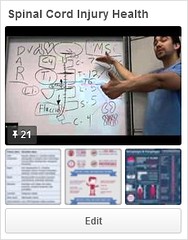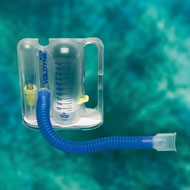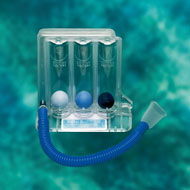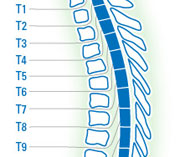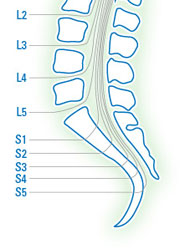Respiratory Management
Determined2Heal Tips:
|
Click Here — Check out our Tips for Quads on Ventilators Pinterest board |
Click Here — Check out our Spinal Cord Injury Health Pinterest board |
My respiratory issues were intense when I was first injured. I was on a ventilator for six weeks and had a tracheostomy (tube through the skin of my neck to my lungs) tube for three months. My family and I were told early on that I was never going to get off the ventilator.
I had two episodes of pneumonia when I was in the hospital. For months I had to have chest percussion every few hours to help remove the secretions from my lungs. The secretions from my lungs had to be suctioned with an instrument through my trach tube.
Through hard work and breathing exercises I have been able to strengthen my diaphragm. I now have very few respiratory issues. During FES (functional electrical stimulation) of my legs I actually get a cardiovascular workout and breathe deeply. I still can’t cough well on my own.
I need someone to give me a quad cough (push on my lower abdomen) when coughing up mucus. I use an abdominal binder when standing now that I am stronger. I used to use it full time in my wheelchair. The standing frame has helped me taper off of the need for an abdominal binder in the wheelchair.
What level of SCI are most likely to have respiratory issues?
C5 and above usually have the most pulmonary problems. They might require a breathing machine or a trach tube because the diaphragm and other muscles that help with breathing are not functioning with the brain to maintain proper breathing and air movement.
Some patients who start out on a breathing machine are able to breathe on their own as the inflammation in the injured area decreases. It takes up to 6 months for the inflammation to totally disappear. Do not be discouraged if you require breathing assistance right after your injury.
Many quads do get off of the breathing machine after they have survived the first few months. Those months are all about surviving.
Any injury above T1 will reduce the strength of your intercostal muscles which are located in between your ribs. They are used for coughing and deep breathing. Focus on daily breathing exercises and quad-coughs are needed for coughing.
An injury above T12 will still have problems with the strength of abdominal and intercostal muscles. Always keep breathing exercises as a part of your regular exercise regimen. You can electro-stimulate your abdominal muscles to strengthen them which will help with all aspects of breathing.
What steps are there for treating respiratory problems?
Increasing breathing exercises. Do the exercises every two hours. There is an incentive spirometer that can measure your improvements.
-
Quad coughing
-
Chest percussion
-
Sitting up or standing on your own
-
Changing your position frequently while sitting or in bed
-
Turned every two hours in bed. This changes the area of your lungs that get air and helps to keep all areas of your lungs inflated which prevents pneumonia
-
Stay away from smoke and if you smoke, quit
-
Stay away from dusty areas or areas with a lot of mold
Incentive Spirometers
| Voldyne 5000 Volumetric Exerciser“Features:• Voldyne 5000 Volumetric Exerciser – Capacity: 5000ml. |
• Large volume measurement and advanced low-work-of-breathing filter.
• Compact, ergonomic design with built-in handle.
• Gradations on both sides of unit and good/better/best flow window for visualization of daily improvement.”
Determined2heal Tips:
Helps to open up the capillaries of the lungs. Used to strengthen and to keep the lungs healthy. Check with your respiratory therapist to develop the best program for you.
| The Triflo II Inspiratory Exerciser“The Triflo II flow-oriented, 3-ball incentive spirometer features: |
- Wide flow rate range from 600 – 1200cc/sec
- Three color-coded balls / three chambers
- Minimum flow imprinted on each chamber
- Compact design and break resistant plastic”
Determined2heal Tips:
Helps to open up the capillaries of the lungs. Used to strengthen and to keep the lungs healthy. Check with your respiratory therapist to develop the best program for you.
Lung Volume Exerciser“The Hudson RCI LVE (lung volume exerciser) encourages deep, prolonged inspiration with design features:
|
Determined2heal Tips: Helps to open up the capillaries of the lungs. Used to strengthen and to keep the lungs healthy. Check with your respiratory therapist to develop the best program for you. |
Suction Device
| The DeVilbiss® Homecare Suction Unit with portable option”High Performance – The DeVilbiss® Homecare Suction Unit 7305 series completes the portable suction line with high performance capabilities in a small compact package. Vacuum adjustments allow for 80-550 mm Hg and a free flow of 27 liters/minute.Easy-to-Read Gauge – The unit has conveniently placed gauge for easy reading. This is especially important when precise measurements of vacuum are needed for the pediatric patient.Adjustable Flow Regulator – Easy-to-turn knob conveniently placed directly below gauge, for easy use and control. Knob has safety lock feature which will not allow the knob to be twisted off.Compact Design – All of the high-performance capabilities are conveniently placed in a small compact package weighing less than 6.3 lbs. The compact design with the high-performance capabilities makes the 7305 series suction unit the smallest and strongest portable suction unit of its kind.Increased Battery Capabilities – The 7305P DeVilbiss® Homecare Suction Unit has increased battery capabilities for use up to one hour. This provides the patient with added security when it is needed most.” | Determined2heal Tips: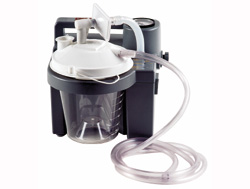 |
Nebulizer
| The DeVilbiss PulmoMate“Updated sleek design allows for easy transport.It has a 5 year standard warranty backed by the DeVilbiss® brand of high quality.Delivers a consistent and optimal pressure flow to any nebulizer for the most effective treatment.Increased Battery Capabilities – The 7305P DeVilbiss® Homecare Suction Unit has increased battery capabilities for use up to one hour. This provides the patient with added security when it is needed most.” | Determined2Heal Tips: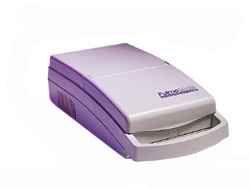 |
Percussion
| If anyone knows of any mechanical chest percussion devices please e-mail determined2heal@gmail.com |
| “The “Expand-A-Lung”“Inspiratory/expiratory breathing resistance exerciser is a breakthrough product for improving breathing and shortness of breath. Research supports that this type of exercise significantly improves the strength of respiratory muscles (the diaphragm and the intercostals), and increases the volume of lung ventilation. This exercise allows you to deliver more air deeper into your lungs in order to reach and expand more alveoli. The end result is deeper, easier and better breathing through breathing resistance exercise without any drug interaction.” | 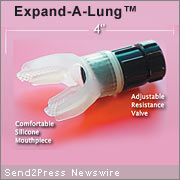 |
Airway Clearance DevicesAirway clearance devices are used to clear the airways of mucus for the purpose of improving breathing and decreasing the chances for respiratory infections to develop. These airway clearance devices are critical to the maintenance of many lung diseases.Intrapulmonary Percussive Ventilator (IPV) The FLUTTER® Mucous Clearance Device and AcapellaTM Device Intermittent Positive Pressure Breathing (IPPB) Devices ThAIRapy Vest Mechanical Percussors |









